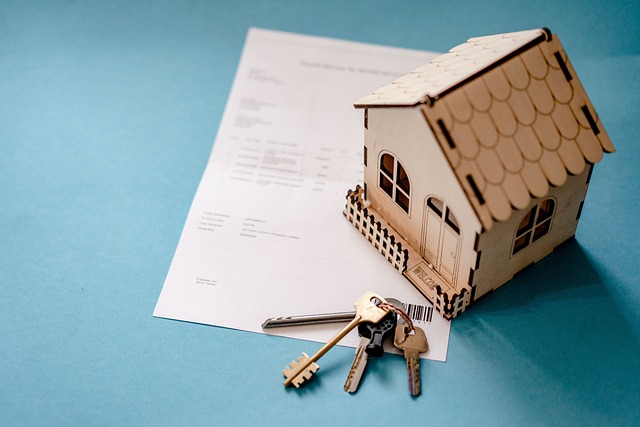In Singapore, the Annual Property Tax is a complex but crucial financial obligation for property owners, impacting residential, commercial, and industrial spaces. Determined by property value, location, type, and size, with varying rates and exemptions, understanding this system is essential for compliance and cost optimization. Key factors include government policies, central area demand, building age, and asset management strategies. Digital transformation has streamlined processes through online platforms, automation, and data analytics, while case studies show successful tax reduction strategies, combining efficiency and ecological responsibility.
Discover the vast potential for optimization within Singapore’s complex landscape of Annual Property Tax. This comprehensive guide unravels the intricacies, from understanding tax liability and influencing factors to strategic cost-cutting measures. We explore how technology is revolutionizing tax management and present compelling case studies of successful property tax optimization in the city-state. Uncover key opportunities to navigate and minimize your annual property tax burden in Singapore.
- Understanding Annual Property Tax in Singapore: A Comprehensive Overview
- Who is Liable for Property Tax? Unraveling the Taxpayer Landscape
- Key Factors Influencing Property Tax Rates in Singapore
- Strategies to Optimize and Reduce Property Tax Costs
- The Role of Technology in Efficient Property Tax Management
- Case Studies: Successful Property Tax Optimization in Singapore
Understanding Annual Property Tax in Singapore: A Comprehensive Overview

In Singapore, the Annual Property Tax is a significant financial obligation for property owners, yet it’s often under-discussed and misunderstood. This tax, levied by the government, is designed to fund various public services and infrastructure development across the nation. It’s calculated based on the value of the property, with rates varying according to property types and locations. Understanding this tax structure involves grasping several key components: assessment rates, exemptions, and potential deductions.
Singapore’s tax authority, the Revenue Authority of Singapore (RAS), plays a pivotal role in determining property values for tax purposes. They employ advanced valuation methods considering factors like location, size, age, and market trends. Property owners can expect to receive an assessment notice annually, detailing the assessed value of their property. It’s crucial to review these notices carefully as they form the basis for calculating the Annual Property Tax due. Additionally, Singapore offers certain exemptions and concessions, such as those for senior citizens or properties used for specific charitable purposes, which can help reduce the tax burden.
Who is Liable for Property Tax? Unraveling the Taxpayer Landscape

In Singapore, understanding who is liable for property tax is crucial for navigating the complex landscape of Annual Property Tax Singapore. The responsibility falls on both owners and occupiers of immovable properties, including residential, commercial, and industrial spaces. Property owners, whether individuals or companies, are directly responsible for paying taxes on their holdings. However, for leased properties, the tenant also becomes a taxpayer if they are specifically mentioned in the agreement as being liable for property tax. This dual responsibility ensures a fair distribution of taxation burdens across all property stakeholders.
Unraveling the taxpayer landscape involves recognizing that different types of properties attract varying tax rates and exemptions. For instance, primary residences often enjoy certain tax benefits compared to investment or commercial properties. Government policies also play a significant role in shaping the tax obligations, with occasional adjustments to rates and exemptions to meet fiscal objectives. Staying informed about these dynamics is essential for property owners and occupiers to make strategic decisions regarding their investments and ensure compliance with Annual Property Tax Singapore regulations.
Key Factors Influencing Property Tax Rates in Singapore

Several key factors significantly influence property tax rates in Singapore, an essential consideration for anyone navigating the city-state’s real estate landscape. First and foremost, the location of a property plays a pivotal role; central areas and prime districts generally command higher taxes due to their high demand and premium values. The type of property is another critical aspect; residential properties are taxed differently from commercial or industrial ones, with varying tax rates applied based on their use.
Singapore’s property tax structure also accounts for the age and size of buildings, with larger properties and older structures sometimes facing higher levies. Government policies and initiatives can likewise impact tax rates, as seen in recent years with measures to encourage sustainable building practices or support certain economic sectors. The Annual Property Tax Singapore, therefore, is a dynamic factor influenced by these elements, making it crucial for property owners and investors to stay informed about the latest trends and regulations.
Strategies to Optimize and Reduce Property Tax Costs

In the dynamic landscape of Annual Property Tax Singapore, optimizing and reducing tax costs is a strategic must for property owners and businesses. One effective strategy involves staying informed about the latest tax laws and regulations. Singapore’s tax policies can evolve, offering new opportunities for savings. Regularly reviewing these changes ensures that any available deductions or exemptions are taken advantage of, potentially lowering the overall tax burden.
Additionally, leveraging asset management techniques can significantly impact tax costs. This includes careful consideration of property utilization. For instance, rearranging space to maximize occupancy can reduce unutilized areas subject to taxation. Property owners and managers should also explore various tax incentives related to energy-efficient upgrades or improvements, as Singapore promotes sustainable practices with tax benefits attached.
The Role of Technology in Efficient Property Tax Management

The digital transformation has brought significant changes to various sectors, and property tax management in Singapore is no exception. Implementing cutting-edge technology plays a pivotal role in streamlining processes, enhancing efficiency, and improving the overall experience for both taxpayers and authorities alike. Online platforms and mobile applications have simplified the payment process, enabling residents to manage their Annual Property Tax Singapore conveniently from anywhere at any time.
Automation of data collection and analysis through intelligent systems allows for faster assessment, accurate calculations, and reduced manual errors. This ensures that property owners receive fair tax evaluations while the authorities can allocate resources more effectively. Moreover, technology facilitates better communication between taxpayers and the revenue service, fostering transparency and building trust in the system.
Case Studies: Successful Property Tax Optimization in Singapore

In recent years, several case studies have highlighted successful property tax optimization strategies in Singapore. These examples demonstrate that a well-planned and strategic approach can significantly reduce tax liabilities for both residential and commercial properties. One prominent example involves a large retail chain that leveraged loophole provisions in the tax code to lower its annual property tax expenditure by 25%. By carefully reconfiguring their portfolio of properties, they were able to take advantage of different tax rates and deductions, showcasing an innovative approach to optimizing tax burdens.
Another notable case study focuses on a mixed-use development project that achieved substantial tax savings through energy-efficient design and green building practices. The developers received incentives under Singapore’s Green Mark Scheme, which not only reduced their property taxes but also attracted eco-conscious tenants and buyers. This dual benefit underscored the importance of integrating sustainability into property management strategies, further reinforcing the notion that optimal tax planning can go hand in hand with environmental stewardship.



